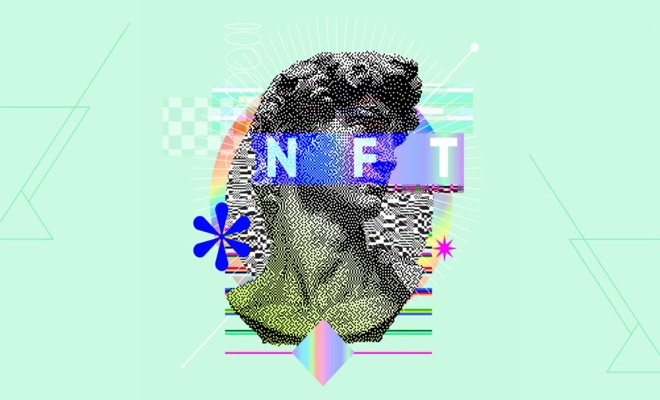
What is an NFT? Everything You Need to Know About Non-Fungible Tokens
In recent years, Non-Fungible Tokens (NFTs) have taken the digital world by storm 🌐. From million-dollar digital artworks to virtual real estate and blockchain-based video games, NFTs are reshaping how we perceive ownership, creativity, and value in the digital era. But what exactly are NFTs? Why are they such a big deal? And what potential do they hold for the future? Let’s break it all down.
🔍 What Is an NFT?
An NFT is a unique digital asset that exists on a blockchain. Unlike cryptocurrencies like Bitcoin or Ethereum, which are interchangeable (fungible), NFTs are non-fungible—meaning each one is one-of-a-kind and can't be exchanged on a one-to-one basis with another. Think of it as the difference between a dollar bill and a rare baseball card 🃏—both are valuable, but one is unique.
NFTs can represent ownership of various digital and physical assets including:
- 🎨 Digital art
- 🎵 Music and audio clips
- 🕹️ In-game items
- 🏠 Virtual or real estate
- 🎥 Videos and memes
🔗 The Technology Behind NFTs
At the heart of NFTs lies blockchain technology, primarily Ethereum, although other networks like Solana and Polygon also support NFTs. Here’s how it works:
- Blockchain: A decentralized ledger that records every transaction, ensuring transparency and trust 🔐.
- Smart Contracts: Self-executing codes that define the terms of the NFT (e.g., royalties, resale rights) 💻.
- Metadata: Descriptive info like creator name, ownership history, and digital file info 📂.
- Wallets: Digital wallets like MetaMask allow users to store, buy, and sell NFTs securely 🔑.
🎨 Use Cases of NFTs
The potential applications of NFTs extend far beyond digital art. Let’s explore some of the industries NFTs are transforming:
1. Art & Collectibles 🖼️
Artists can mint and sell their creations directly to fans, bypassing galleries and auction houses. NFTs also allow for royalties from secondary sales—a game-changer for creators.
2. Gaming 🎮
NFTs offer verifiable ownership of in-game assets—armor, weapons, skins, etc. Players can trade, sell, or use these items across multiple games (interoperability), redefining the gaming economy.
3. Music & Entertainment 🎧
Musicians and filmmakers are exploring NFTs to offer exclusive content, backstage access, or limited-edition releases. Fans gain a deeper connection and a sense of ownership.
4. Virtual Real Estate 🏙️
Platforms like Decentraland and The Sandbox let users buy, sell, or build on virtual plots of land. These spaces can host events, stores, or even advertising campaigns.
5. Identity & Credentials 🎓
NFTs can represent certifications, IDs, or even diplomas on the blockchain, offering secure, verifiable credentials with no central authority needed.
💡 Advantages of NFTs
NFTs bring several advantages for creators, collectors, and platforms:
- Immutable Proof of Ownership: Stored on the blockchain and viewable by anyone.
- Creator Royalties: Artists can earn recurring income through smart contracts.
- Global Access: Anyone with an internet connection can participate 🌍.
- Interoperability: NFTs can be used across compatible games, apps, and services.
- Market Liquidity: Active NFT marketplaces make trading faster and easier.
⚠️ Challenges Facing NFTs
Despite the excitement, NFTs aren’t without problems:
- Environmental Concerns: Ethereum’s old proof-of-work method was energy intensive, though upgrades (like Ethereum 2.0) are addressing this ♻️.
- Volatility: NFT prices can skyrocket—or crash—overnight 📉.
- Scams & Frauds: Copycat NFTs and phishing scams remain common threats.
- Legal Ambiguity: Copyright, intellectual property, and taxation laws around NFTs are still evolving 🧾.
- Accessibility: Using wallets, gas fees, and understanding marketplaces can be overwhelming for beginners.
📈 The Market for NFTs
According to reports, the NFT market exceeded $40 billion in sales in 2021 alone. Top marketplaces include:
- OpenSea: The largest and most popular NFT marketplace 🌊
- Rarible: Community-centric platform for minting and trading NFTs
- Foundation: Invite-only platform with a focus on high-end art
- SuperRare: A curated NFT marketplace for fine digital art
🔮 What Does the Future Hold?
While still in its early days, the NFT revolution is only beginning. Future possibilities include:
- 🔗 Cross-platform NFT usage (e.g., same item usable in multiple games)
- 🗳️ NFT-based voting systems for decentralized governance
- 🏦 Integration with DeFi for NFT-backed loans and staking
- 🎭 Tokenized ticketing systems for concerts, sports, and events
- 📚 Education certificates and professional licenses as NFTs
🧠 Final Thoughts
Whether you're an artist, investor, collector, or curious tech enthusiast, NFTs offer a fascinating glimpse into the future of digital ownership. They're changing how we value creativity, interact with content, and even earn income. Like all emerging technologies, NFTs come with risks—but also tremendous opportunities 🚀.
Disclaimer: This article is for informational purposes only and should not be considered financial advice. Always do your own research before making any investment.